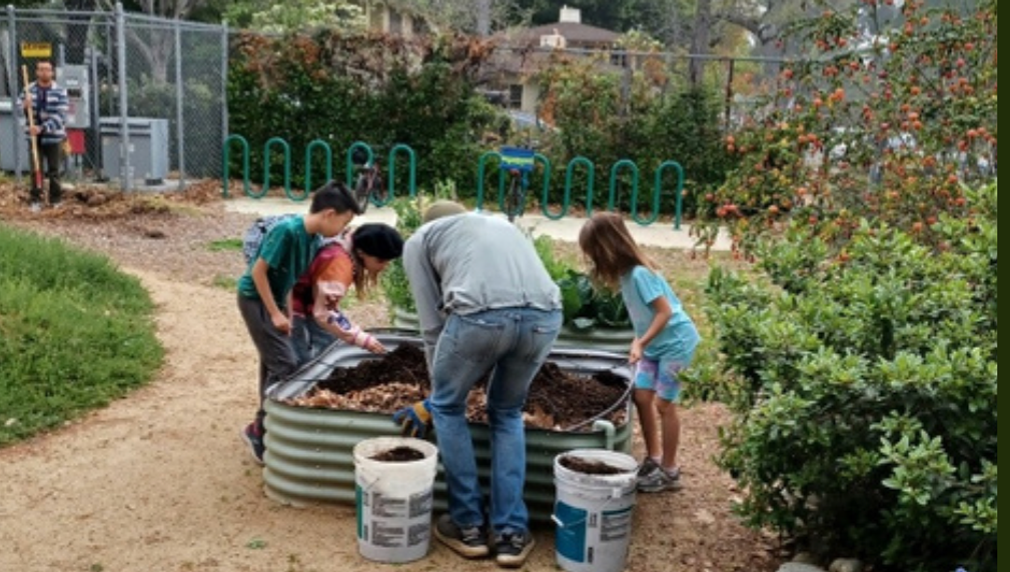Cool Schools SGV
The Cool Schools SGV project will support greening three San Gabriel Valley schools by planting or distributing up to 50 climate-resilient trees, installing three rain and native gardens, and establishing onsite composting systems. These outdoor learning hubs will provide hands-on environmental education, improve campus health, and foster community stewardship. Our goal is to create lasting green spaces that build climate resilience, enhance biodiversity, and inspire students in high-needs areas to connect with nature and their communities.

What is the primary issue area that your application will impact?
Green space, park access, and trees
In which areas of Los Angeles will you be directly working?
San Gabriel Valley
In what stage of innovation is this project, program, or initiative?
Expand existing project, program, or initiative (expanding and continuing ongoing, successful work)
What is your understanding of the issue that you are seeking to address?
Many schools across the San Gabriel Valley located in high-needs communities face critically low green space and tree canopy coverage, worsening urban heat, air pollution, and biodiversity loss. These same neighborhoods often lack access to parks and green space, limiting opportunities for hands-on environmental learning and reinforcing environmental and educational inequities. Our Cool Schools SGV project will green three school campuses by planting trees, building rain and native gardens, and onsite composting systems. These outdoor learning spaces will support STEAM education, foster environmental stewardship, and create healthier, more resilient school environments. As climate change and urban development disproportionately impact disadvantaged communities, this project offers a meaningful step toward climate justice and long-term ecological and educational equity.
Describe the project, program, or initiative this grant will support to address the issue.
This project will green three school campuses in the San Gabriel Valley, prioritizing high-needs communities with limited tree canopy, green space, and access to nature. At each site, we will plant or distribute up to 50 climate-resilient trees, install 3 interactive rain and native gardens, and establish fully onsite composting systems- creating vibrant learning hubs that improve environmental health and educational access.
Gardens will feature California native plants that support pollinators, restore biodiversity, and capture stormwater to reduce runoff. Tree planting will provide shade, mitigate urban heat, and improve air quality. A unique feature of this project is the school-managed composting systems, which turn campus food waste into nutrient-rich soil, eliminating the need for industrial composting.
Activities include site-specific planning and design, community planting days with students and partners, and the installation of native gardens, trees, and composting systems. To support outdoor learning, we’ll also provide activity guides and interpretive signage. When schools have limited space for tree planting, any additional trees will be offered to community members through organized giveaways, ensuring that all trees find a home and continue to benefit the neighborhood.
This scalable model combines ecological restoration with place-based education to address climate, health, and educational inequities, transforming schoolyards into resilient learning hubs.
Describe how Los Angeles County will be different if your work is successful.
Success means three San Gabriel Valley schools will become vibrant green campuses where tree planting, onsite composting, and rain and native gardens create cooler, healthier, and more resilient learning environments. These schoolyards will manage stormwater, reduce pollution, and provide daily access to nature for students in high-needs communities.
Students and families will gain hands-on experience planting trees, composting food and garden waste onsite, and learning how native landscapes support pollinators, improve air quality, and strengthen communities.
Over time, this model can expand district-wide across San Gabriel Valley Unified and serve as a blueprint for other schools and districts in Los Angeles County. As more campuses adopt this approach, neighborhoods will see more green space, restored habitats, and stronger connections between youth, nature, and community well-being.
Approximately how many people will be impacted by this project, program, or initiative?
Direct Impact: 2,100
Indirect Impact: 6,000